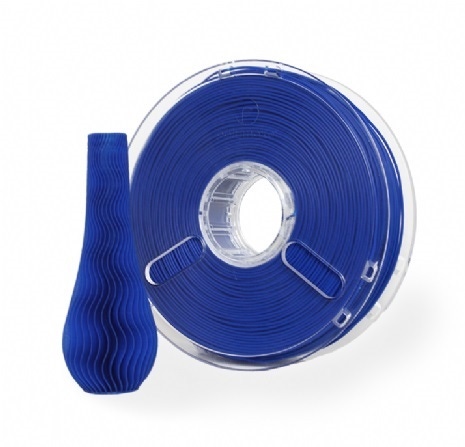Improved strength and stiffness, faster speed of processing among benefits; structural components may eventually be 3D-printable.
December 7, 2016

Graphene-enhanced poly lactic acid (PLA) filaments for 3D printing are now on the market from UK company Haydale Composite Solutions (Loughborough) and collaborator Filamentprint (UK) Ltd. The filaments reportedly feature excellent first layer adhesion and z axis strength retention; improved strength and stiffness; better impact performance; excellent print quality and surface finish; and improved dimensional accuracy. Furthermore, they are compatible with a broad range of printers reportedly enable a major increase in speed of processing. These attributes were reported after trials by a number of 3D printing companies.
|
3D printing speeds are enhanced with new graphene-containing PLA bioresin filaments. |
The Haydale graphene enhanced PLA filaments are available in 1.75-mm and 2.85-mm diameters. HCS and Filamentprint are also developing an extended range of graphene-enhanced thermoplastics including acrylonitrile-butadiene-styrene (ABS), polyamide (PA) and polypropylene (PP) materials.
HCS is collaborating with Filamentprint (UK) Ltd, a company specializing in the compounding and manufacture of thermoplastic filaments for 3D printing and Fullerex Ltd, parent company Haydale Graphene Industries’ sales agent for its functionalized nanomaterials. The mechanical, electrical, thermal and physical properties of the graphene-enhanced PLA filaments can reportedly be tailored to meet the needs of different applications and markets.
Joe Eldridge, Director of Fullerex commented: “Significant improvements in conventional materials are needed to move FDM [fused deposition modeling] 3D printers beyond making prototypes or display models and into a capable technology for rapidly manufacturing mechanically robust, functional parts. Haydale's ability to engineer graphene to properly exploit its desirable properties has been a vital prerequisite to bridge this gap. This filament is easy to use and has broad compatibility, so is an exciting option regardless of whether you are a hobbyist or an industrial manufacturer.”
Ray Gibbs, CEO at Haydale Limited, said: “I am delighted with this sales initiative which represents another step forward for Haydale as we seek to commercially exploit the potential for graphene and other nanomaterials. The trials undertaken provided excellent results and that gives us confidence we have a ready-made product for this rapidly growing world-wide market. While we have chosen thermoplastic materials as the first product suite, we know from our relationship with WCPC (the Welsh Centre for Printing and Coating) that they have 3D printed with a range of novel materials from chocolate and collagen to concrete! Building on this expertise we see additive manufacturing using our nano materials included as another potential area for future sales.”
Commenting on the feedback from 3D printing companies, Gerry Boyce, Managing Director of HCS said: “We are very excited about the development of graphene enhanced thermoplastic materials for 3D printing. These new materials offer so many benefits including the ability to make parts stiffer, stronger and faster. Speed of print has historically been a barrier to wide scale take up of 3D printing. In the future, the thought of making structural components direct from CAD excites us enormously.”
Clive Wilcox Managing Director of Filamentprint (UK) Ltd added: “We are unashamed nano-technology enthusiasts. Our thinking incorporates that of both the major industrialists through to the hobbyists. Our collaboration with Haydale and Fullerex is the next logical step in the developmental process to enable us to provide bespoke solutions for our clients’ requirements.”
About the Author(s)
You May Also Like





